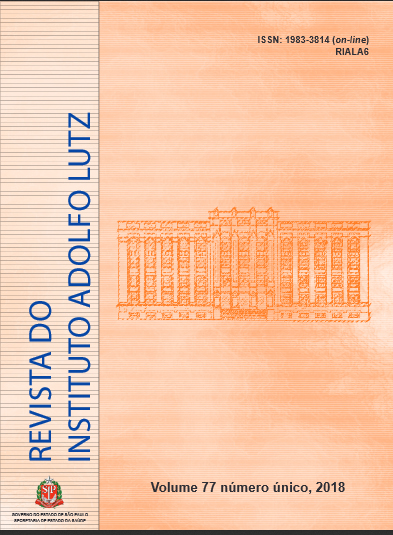Abstract
The occurrence of endotoxin in the treated water for hemodialysis is an important indicator of quality, since high concentrations of endotoxin constitute the main source for causing chronic inflammation in patients undergoing dialysis. This study aims at validating the analytical method for determining quantitatively the bacterial endotoxin in hemodialysis water samples. The data from the kinetic chromogenic method were compared with the results obtained from the gel coagulation technique. The gel coagulation assays were performed in three samples of hemodialysis water, according to the Brazilian Pharmacopoeia. The validation of the kinetic chromogenic method was performed using the same samples through the portable test system. The geometric means of the concentrations of the endpoints obtained from the tests for confirming the LAL sensitivity and the interference by gel coagulation method showed a result of 0.125 EU/mL. The results obtained by the chromogenic method for recovering the product positive control varied from 89 to 186% and the coefficient of variation from 2.5 to 18.2%, demonstrating that the samples did not show interference. Equivalent results were obtained in both methods, therefore being viable the implementation of this methodology in the public health laboratories.
References
1. Ferreira JAB, Nobrega HN, Vieira VV, Abrantes SMP. Diversidade genética e produção de biofilme de amostras de Pseudomonas aeruginosa isoladas da água utilizada em unidades de Terapia Renal Substitutiva. Rev Analytica [Internet]. 2013;65:56-69. Disponível em: https://www.arca.fiocruz.br/bitstream/icict/8504/2/analytica_65_56-70.pdf
2. Coulliette AD, Arduino MJ. Hemodialysis and water quality. Semin Dial. 2013;26(4):427-38. http://doi.org/10.1111/sdi.12113
3. Suman E, Varghese B, Joseph N, Nisha K, Kotian MS. The bacterial biofilms in dialysis water systems and the effect of the sub inhibitory concentrations of chlorine on them. J Clin Diagn Res. 2013;7(5):849-52. http://doi.org/10.7860/JCDR/2013/5118.2956
4. Hasegawa T, Nakai S, Masakane I, Watanabe Y, Iseki K, Tsubakihar Y et al. Dialysis fluid endotoxin level and mortality in maintenance hemodialysis: A nationwide cohort study. Am J Kidney Dis. 2015;65(6):899-904.http://doi.org/10.1053/j.ajkd.2014.12.009
5. Ministério da Saúde (BR). Agência Nacional de Vigilância Sanitária. Resolução RDC nº 11, de 13 de março de 2014. Dispõe sobre os requisitos de Boas Práticas de Funcionamento para os Serviços de Diálise e dá outras providências. Diário Oficial da União. Brasília, DF, 14 mar 2014. Seção 1(50):40.
6. Agência Nacional de Vigilância Sanitária - ANVISA. Farmacopeia Brasileira. 5. ed. v.1. Brasília (DF): Agência Nacional de Vigilância Sanitária; 2010. Disponível em: http://www.anvisa.gov.br/hotsite/cd_farmacopeia/pdf/volume1.pdf
7. Parenteral Drug Association – PDA. Technical Report No 33. Evaluation, validation and implementation of alternative and rapid microbiological methods. Bethesda: Parenteral Drug Association; 2013. Disponível em: https://store.pda.org/TableOfContents/TR3313_TOC.pdf
8. Sutton S. Validation of alternative microbiology methods for product testing. Pharm Tech. 2005;29(4):118-22. Disponível em: http://www.pharmtech.com/validation-alternative-microbiology-methods-product-testing
9. Suzuki Y, Suzuki K, Shimamori T, Tsuchiya M, Niehaus A, Lakritz J. Evaluation of a portable test system for assessing endotoxin activity in raw milk. J Vet Med Sci. 2016;78(1):49-53. http://www.doi.org/10.1292/jvms.15-0370

This work is licensed under a Creative Commons Attribution 4.0 International License.
Copyright (c) 2018 Ellen Gameiro Hilinski, Adriana Aparecida Buzzo Almodovar, Fernando Pontes de Lima e Silva, Terezinha de Jesus Andreoli Pinto, Adriana Bugno
